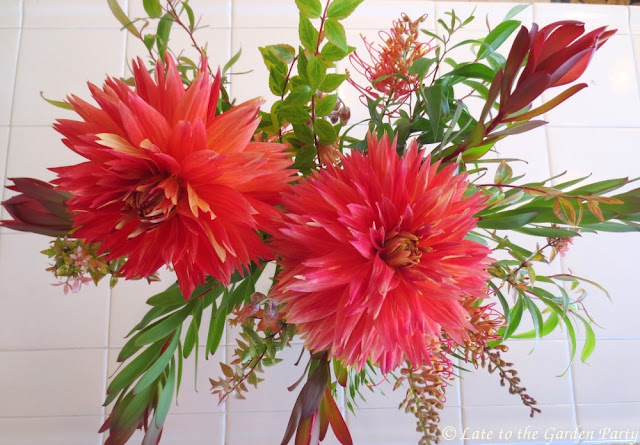I went to the garden center to pick up additional mulch but I came home with more than just mulch. However, I'd like to note that one of the plants I brought home is a succulent.
 |
| This is Aloe labworana, a stemless aloe that grows just 1-2 feet tall bearing yellow flowers in the fall. I've planted it on the west facing slope in the front garden. |
I also brought home three Gomphrena. Now this particular Gomphrena is an annual. When I think about it, my rule should have had a special proviso addressing annuals. They're not expected to last more than a season so, as long as the annual in question is heat tolerant, I should've had a summer-planting exception for that.
 |
| Gomphrena 'Pinball Snowtip Lavender' is heat and drought tolerant. I planted it in the bed fronting our garage. |
But my third purchase can't be justified as easily. In my defense, I've been looking for reasonably priced specimens of the plant in question for a year now. Last year, it was new to the local garden centers and pricey. I bought one and have looked for more ever since. They haven't been widely available here and, when I've found them, the price has made me choke. So, when I found one-gallon containers for what I considered a very reasonable price, I had to bring home three.
 |
| This is Lomandra 'Platinum Beauty'. The one I bought last year has done well in partial shade with very little water. They'll get a little more sun here but the soil should also hold moisture better. |
Of course, none of these justifications can be used to explain this:
 |
| This mail order delivery arrived yesterday afternoon |
Oh well. Rules are made to be broken, aren't they? I usually wait until September to blatantly ignore my self-imposed rule but I got an early start this year. Between winter's pitiful rainfall and July's nuclear heat blast, it's been a tough year for the garden and it's hard not to want to step in to "fix" it.
I'll be doing planting my new arrivals this weekend as well as potting up some rampant seedlings, which is a fine way to spend my time. However you spend the extended holiday weekend, I hope you enjoy it!
All material © 2012-2018 by Kris Peterson for Late to the Garden Party


















































